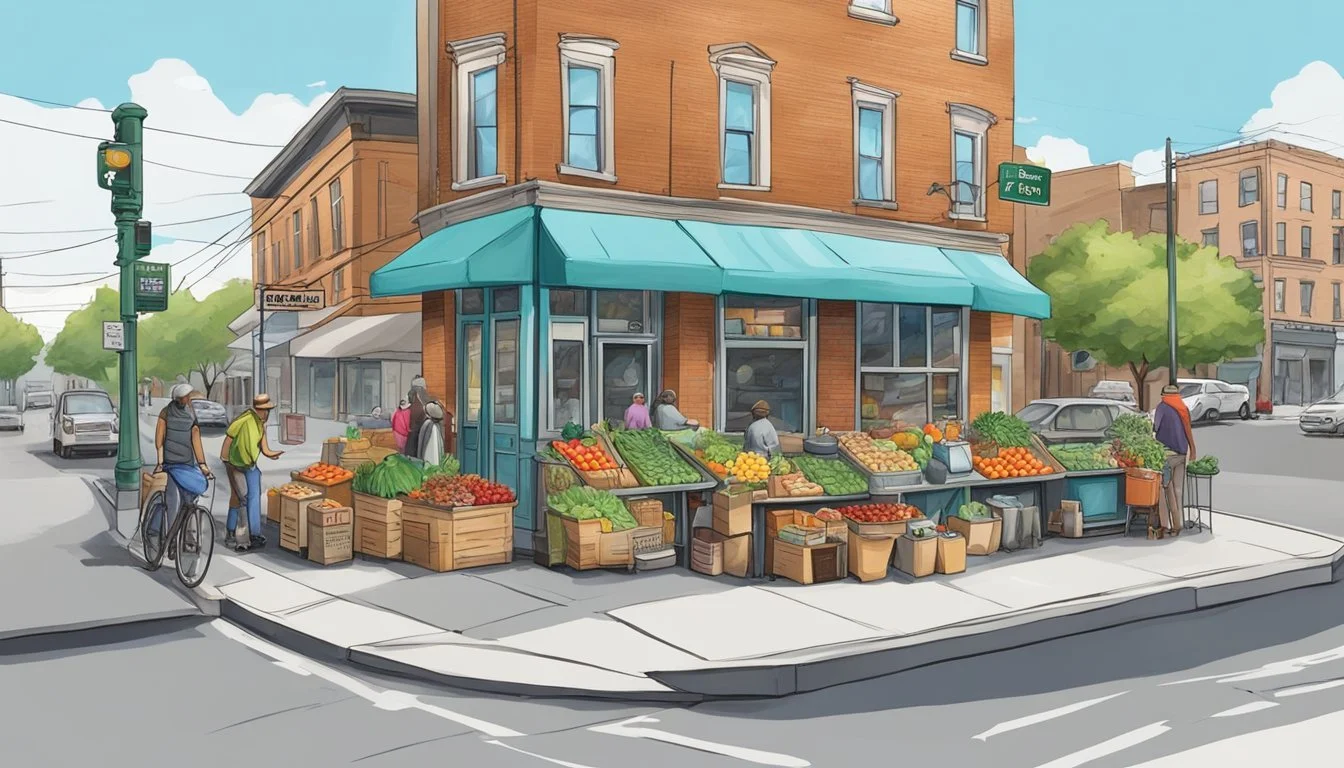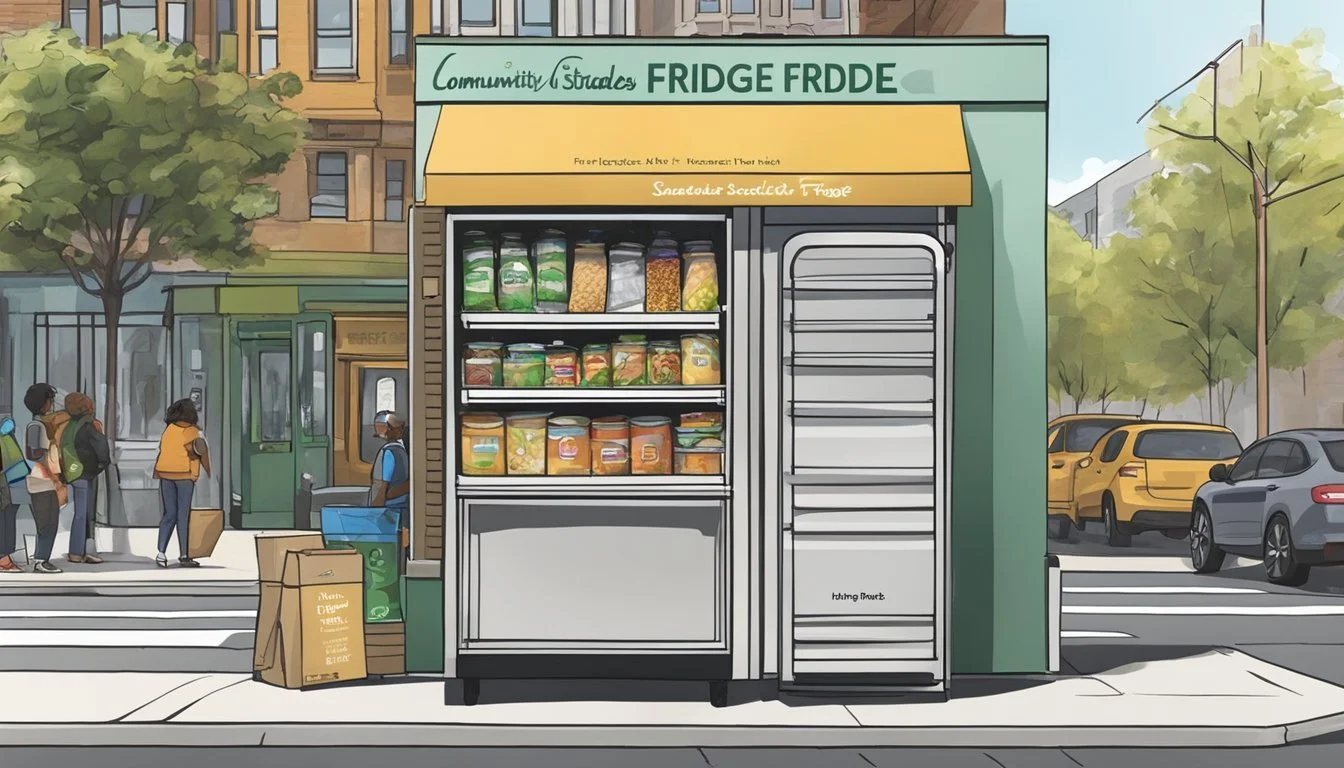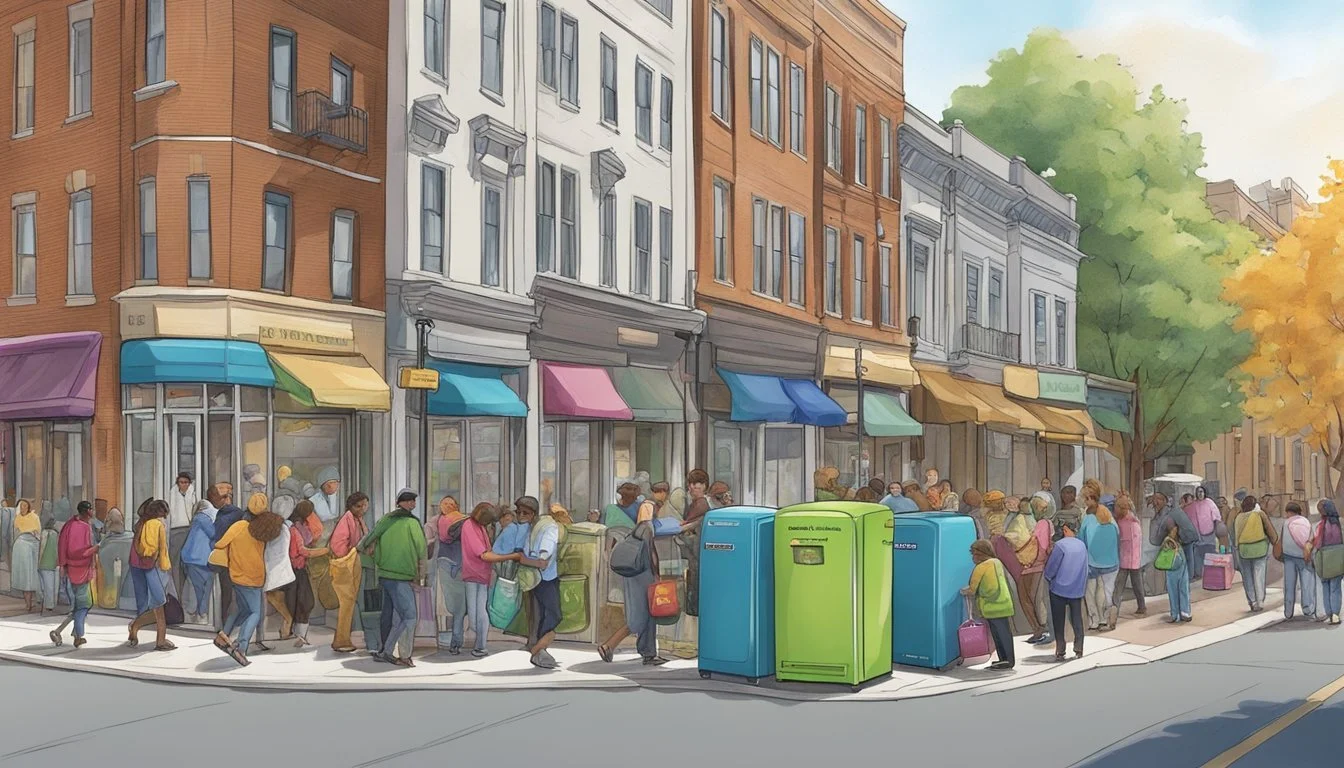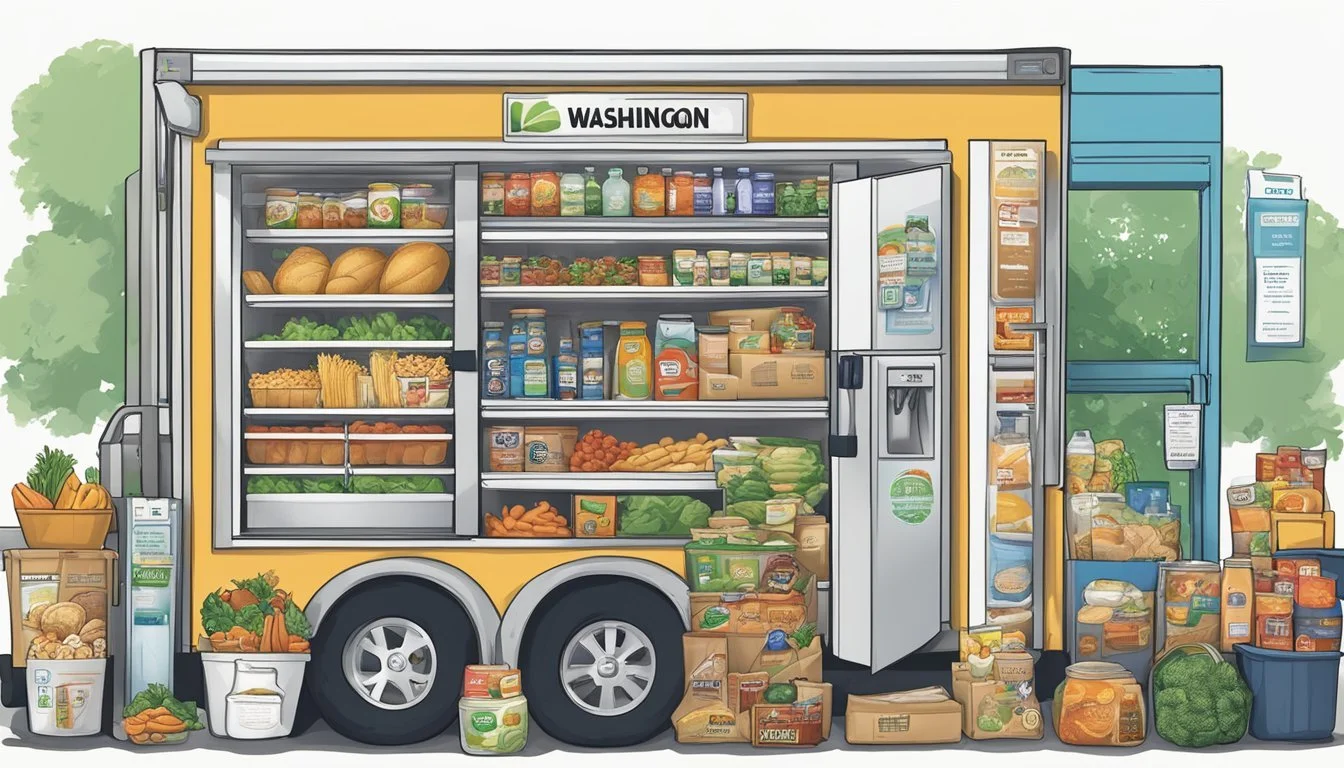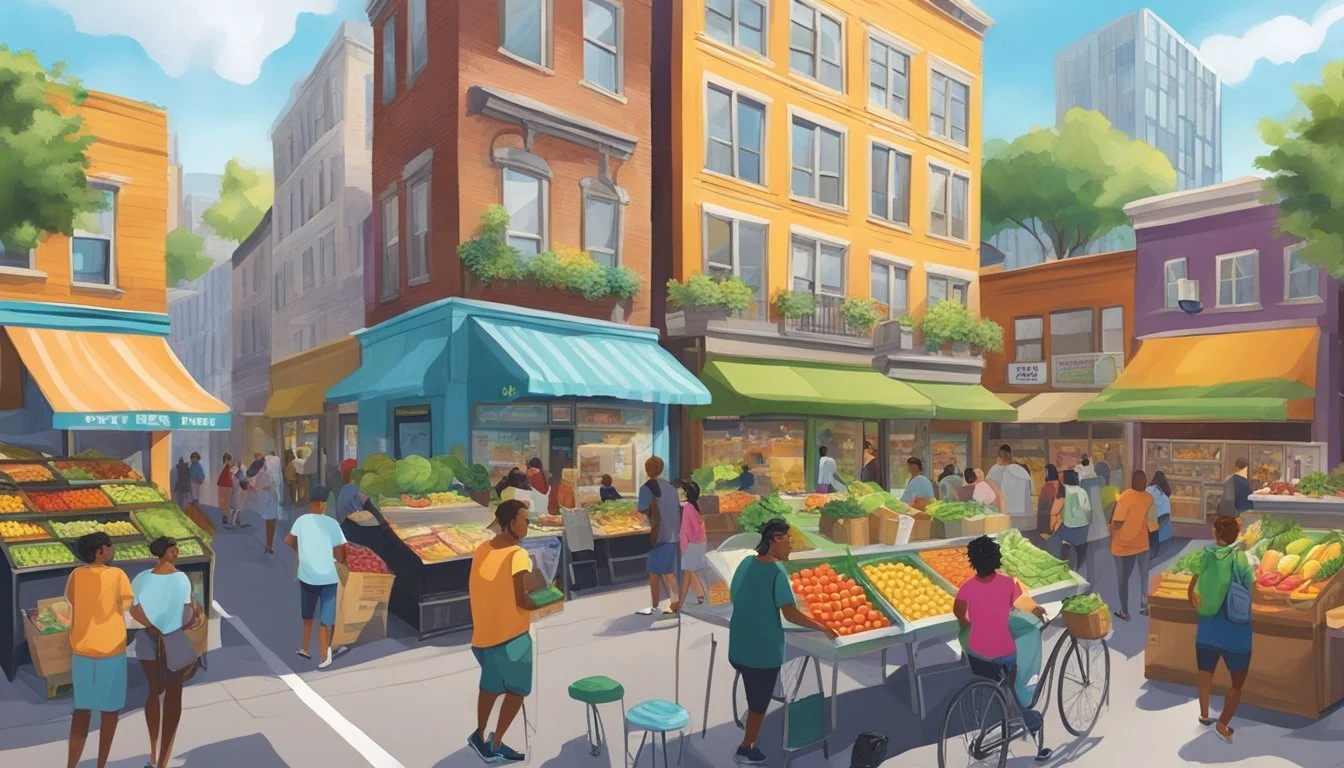Washington, DC Community Fridge
A Cold Front Against Hunger
In Washington, D.C., a growing movement aimed at combating food insecurity has taken shape in the form of community fridges. These communal refrigerators are strategically placed throughout the city, offering free, fresh food to residents. The concept is simple: local businesses, organizations, and individuals share surplus food with those in need, fostering a sense of community and support. The initiative not only helps those facing hunger but also contributes to reducing food waste, ensuring that food surpluses reach tables instead of trash bins.
These community fridges, often hosted outside businesses or in public community spaces, offer a dual benefit; they support local restaurants and provide nourishment to individuals and families facing economic hardship. Several volunteer organizations in the District have mobilized to maintain and stock these fridges, ensuring that they are accessible to everyone, particularly underserved populations.
As the movement gains traction, it's clear that community fridges serve as more than just a food-sharing resource. They are a tangible representation of community solidarity and the collective effort to address a critical issue. In Washington, D.C., these fridges are a piece of a larger puzzle, contributing to community resilience and showcasing how local efforts can lead to widespread change in the fight against food insecurity.
History and Origins of Community Fridges
Community fridges found a stronghold in urban environments as a direct response to food insecurity, with Washington, D.C. adopting the initiative to support its residents.
The Concept and Its Growth in D.C.
In Washington, D.C., the community fridge movement grew as local organizations took notice of the need for accessible food. Initiatives such as Feed the Fridge played a significant role, positioning refrigerators around the city where people could donate food or take it as needed. These fridges operate on the principle that easy access to nutritious food is a right for all, not a privilege for a few.
Impact of the Covid-19 Pandemic
The COVID-19 pandemic further underscored the need for such community-based solutions. Across the U.S., and particularly in D.C., the pandemic led to a sharp increase in food insecurity. Community fridges became an integral part of the emergency response, offering a decentralized method for residents to obtain fresh food without cost barriers. The movement's expansion during this time highlighted both the generosity of communities and the resilience of grassroots responses in times of crisis.
Operational Model
In Washington, D.C., community fridges serve as a nexus between those in need and the community's capacity to give. They operate based on a model that combines the efficiency of food distribution with the compassion of community support.
How Community Fridges Work
Community fridges are public refrigerators placed in accessible locations throughout D.C. Anyone can take what they need or leave what they don't, with these fridges typically stocked with fresh food. The honor system underpins this initiative, trusting that people will only take what they need and contribute when they can.
Roles of Restaurants and Nonprofits
Local restaurants and nonprofits are pivotal to the community fridge ecosystem. Restaurants like Medium Rare are known to prepare and supply meals to be stored in the fridges. Nonprofits, on the other hand, are responsible for securing funding, organizing, and maintaining the refrigerator sites. This partnership ensures a steady supply of nutritious food options and represents collaborative efforts to combat food insecurity.
Donation Processes
Donations for community fridges can come from various sources:
Community members: Individuals can bring perishable and non-perishable food items to community fridge locations
Local restaurants: Establishments donate surplus meals, increasing the variety of healthy options available
Nonprofits: Organizations like We Care, Inc. facilitate the logistics, from the collection to the distribution of food donations
Through these collaborations, the D.C. community fridge project bridges the gap between abundance and need, flourishing on the shared belief that access to nutritious food is a right, not a privilege.
Locations and Accessibility
Washington, D.C. has embraced the community fridge initiative, facilitating easy access to nutritious food and fostering community spirit through strategic placement of refrigerators across the district.
Distribution Across the District
Community fridges are widely distributed throughout Washington, D.C., predominantly located in high-traffic areas, aiming to reach a diverse population. These fridges are found in 29 strategic locations, including:
Recreation Centers: Key spots for family and community engagement.
Schools: Access points for students and families in need.
Other Public Spaces: Ensuring coverage and accessibility across various neighborhoods.
Efforts are made to ensure that these fridges are regularly stocked and maintained, providing over 700,000 free meals to the community.
Partnerships with Community and Recreation Centers
Through collaboration with the Department of Parks and Recreation and other community centers, the initiative reinforces the city's food security network. These partnerships have been pivotal in establishing a reliable presence in the community, facilitating:
Seamless Integration: By placing community fridges in already established community and recreation centers, they become a natural part of the local infrastructure.
Direct Impact: The strategic locations of these community fridges ensure direct access for individuals and families most in need, aligned with public services provided by these centers.
Supporting Food Security
Washington, D.C.'s community fridge initiatives are making a substantial impact on combating food insecurity. They offer easily accessible, nutritious food for diverse populations, including vulnerable seniors and students.
Tackling Hunger in Specific Demographics
Hunger in Washington, D.C., affects people from all walks of life. A notable nonprofit, Feed the Fridge, places refrigerators across the metropolitan area to combat this issue. They have strategically situated 29 refrigerators at locations like recreation centers and schools, making sure they are accessible to those most in need. With the help of local restaurants, these fridges are consistently stocked with fresh meals.
The impact on food insecurity has been considerable. The demographics targeted include but are not limited to working-class families and individuals struggling financially, ensuring that both adults and kids have a reliable food source.
Programs for Seniors and School Children
The support for seniors and school children is a priority for community fridge initiatives. Customized programs provide:
For Seniors: Direct access to fresh meals in community centers enhances their nutrition and well-being without financial strain.
For School Children: A focus on placing fridges in schools ensures that students have the energy and nutrition they need for effective learning and development.
Feed the Fridge has distributed over 700,000 free meals, illustrating their successful outreach to these groups. The refrigerators are restocked twice a week, ensuring a consistent supply of fresh food.
Through these efforts, the organization sheds light on the underlying issues of hunger and works towards securing the health of both the young and the elderly in the community.
Nutritional Impact
The Community Fridge initiative in Washington, D.C. is a focal point in the fight against food insecurity, targeting nutritional enhancement by providing access to wholesome foods.
Promotion of Nutritious Meals
Washington, D.C.'s Community Fridge programs place an emphasis on offering fresh meals that are nutritionally balanced. These meals include the necessary macronutrients such as proteins and carbohydrates to meet daily dietary needs. By ensuring that the food available is both fresh and nutrient-rich, they support the community not only with sustenance but with proper nourishment.
Balancing Diet Diversity
Nutrition extends beyond the mere provision of calories; it encompasses a diverse diet that incorporates a variety of nutrients vital for health. The Community Fridges strategically stock a range of foods to encourage a balanced diet. For instance:
Proteins: Lean meats, legumes, and dairy products
Carbohydrates: Whole grains, fruits, and vegetables
With these choices readily available, individuals have the opportunity to create well-rounded meals that contribute to their overall health and wellness, fostering both physical and social well-being. The presence of prepared meals further ensures that those who may lack time or facilities to cook still have access to nourishing foods.
Community Engagement and Contribution
Washington, DC's Community Fridge initiatives thrive on robust community engagement and contributions. These programs hinge upon the collective effort of individuals and organizations in sharing resources and offering their time to support the local community.
Sharing Resources and Knowledge
Community fridges serve as a nexus where the sharing of resources and knowledge intersect. Local residents and businesses donate surplus perishable food, which is then made freely available to others in the community. This model not only redistributes food that would otherwise go to waste but also fosters a culture of sharing and collective welfare. Initiatives like "Feed the Fridge" collaborate with small, local restaurants to stock the fridges with fresh meals, ensuring that the community has access to nutritious food. Knowledge about food safety, proper storage, and nutrition is often shared alongside the food donations, empowering community members with information to make healthy choices.
Volunteer Opportunities
Volunteers are the backbone of the community fridge movement, dedicating their time to organize, maintain, and restock the fridges. Opportunities vary, from Food on the Stove—a nonprofit organization supporting these initiatives by contributing meals—to individuals who assist in cleaning and monitoring the fridge sites to ensure they are safe and welcoming for everyone. Volunteers also play a crucial role in outreach, educating community members about the availability and proper use of the fridges. By involving a diverse group of volunteers, community fridges are able to operate across various locations in Washington, DC, each tailored to the needs of its neighborhood.
Sustainability and Environmental Impact
Washington, DC's Community Fridge initiative is a proactive approach to address environmental concerns. By implementing practices that reduce food waste and foster community gardens, these fridges have a tangible impact on sustainability.
Reducing Food Waste
Community fridges in Washington, DC significantly cut down food waste by providing a place where excess food can be shared with those in need. By doing so, they ensure that:
Surplus food from local businesses and individuals is utilized effectively, rather than ending up in landfills.
The environmental burden of waste processing is lessened, as fewer resources are expended in waste management.
Community Garden Initiatives
Community gardens are integral to the environmental strategy of the District. They contribute by:
Cultivating local green spaces: which bolster urban biodiversity and support pollinator populations.
Encouraging local production: This contributes to reduced transportation emissions associated with shipping food from distant locations.
Collaborations and Sponsorships
Washington D.C.’s community fridge initiative thrives on a network of collaborations and sponsorships that ensure continuous operation and outreach. These partnerships play a pivotal role in both funding the initiative and in providing essential services to the community.
Engaging Local Businesses and Corporate Sponsorships
Local businesses, particularly small, local restaurants, are integral to the success of the community fridge initiative. They supply fresh, quality meals that fill the fridges and help address food insecurity. These collaborations not only aid the community but also provide the restaurants with a way to keep their operations going, especially in challenging economic times.
Corporate sponsorships form the backbone of financial support for the community fridges. Companies can sponsor an entire fridge or contribute resources, providing a stable base for the initiative to grow. Financial contributions from these entities ensure the community fridges are well-stocked and effectively managed.
Partnerships with Government Agencies
The D.C. Mayor’s Office and D.C. Department of Parks and Recreation play vital roles in the establishment and maintenance of community fridges. By partnering with these government agencies, the initiative gains access to public spaces and logistical support, making the community fridges more accessible to people across the city.
Through governmental support, the community fridge initiative can navigate zoning laws and health regulations efficiently. The local government's endorsement also adds credibility to the program, encouraging more local businesses and corporations to participate.
Social Media and Public Awareness
Social media plays a crucial role in raising public awareness about the Community Fridge initiative in Washington, D.C. These platforms facilitate the sharing of information and engage community members to support and participate in the cause.
Using Platforms to Increase Visibility
Community fridge programs in Washington D.C. utilize platforms like Twitter and Instagram to enhance their visibility. They post updates about new fridge locations, share stories of community impact, and provide information on how individuals can contribute.
Twitter: This platform is used to quickly spread the word about the community fridge locations and their needs. It's a powerful tool for real-time updates and engaging with a larger audience through retweets and hashtags.
Example Tweet: "Fresh restock at [Fridge Location]! Big thanks to [Local Business] for the healthy food donation. #CommunityFridge #ZeroWaste #DC"
Instagram: With its visual focus, Instagram serves as an excellent medium to showcase the community fridges themselves, the food they offer, and the people they help.
Regular Posts: Images and videos of stocked fridges, happy recipients, and volunteers in action, often accompanied by storytelling captions.
Stories: Uses Instagram Stories for immediate needs or alerts, encouraging followers to take quick action, such as donating surplus food.
Social media campaigns are crucial in mobilizing community action and encouraging food donations, also serving as a transparent medium to show the impact of the community fridge movement on food insecurity. By offering a glimpse into the daily operations and benefits of community fridges, these platforms inspire more people to get involved.
Future Prospects
The growth trajectory of Washington, D.C’s Community Fridge initiative embodies a strong commitment towards alleviating food insecurity.
Expansion Plans and Goals
Washington, D.C's initiative of community fridges aims to extend its reach by establishing additional fridges beyond the initial locations. They envision crossing the city borders into neighboring areas such as Prince George’s County, Maryland, to expand access to fresh, nutritious food for more communities. Concrete objectives include:
Quantitative Goals: Erect at least 10 new community fridges by the end of the next fiscal year.
Geographical Goals:
Primary focus on food deserts within Washington, D.C.
Evaluate potential sites in Prince George's County, Maryland.
Partnership Development: Forge coalitions with local farms and businesses to ensure a sustainable supply of fresh products.
Community Engagement: Increase awareness campaigns to strengthen volunteer and benefactor networks.
With these targeted efforts, the initiative strives to build a more robust and resilient food provision system that benefits a greater segment of the urban and neighboring populations.


